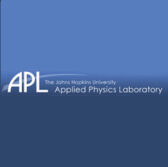 Johns Hopkins University Applied Physics Laboratory has developed a sensor technology under an independent research-and-development project that aims to help submariners gather, examine and access data on their surroundings.
Johns Hopkins University Applied Physics Laboratory has developed a sensor technology under an independent research-and-development project that aims to help submariners gather, examine and access data on their surroundings.
Johns Hopkins APL said Monday the Pelagos environmental data collection system works to measure air and sea parameters as well as employs customized algorithms designed to analyze and disseminate information to tactical users.
“The project began in 2013, when APL staff members noted that three independent sponsors with unique challenges could all benefit from a better understanding of their immediate environment,†said Mike Malchiodi, Pelagos lead engineer at JHUAPL’s sea control mission area.
“We used a design team made up of personnel from both [APL’s force projection sector] and the research and exploratory development department, the fabrication shops, the pressure test facility, and performed electromagnetic interference and susceptibility testing in the chamber run by the space exploration sector,” Malchiodi added.
JHUAPL said the Pelagos team, which operates as a rapid-response unit at the lab, worked to design, fabricate and install the system on board a U.S. Navy submarine.




